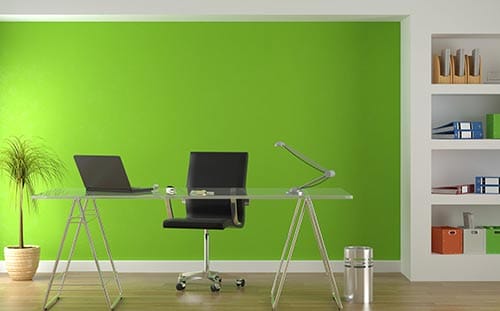
Simple Ways to Go Green When Leasing an Office Space
As the world and the world’s consumers become more and more concerned about the environment, you may want to do your part as a business to be more earth conscious. Some businesses design green buildings from the ground up, but when you’re leasing a building, you don’t have as much freedom to make changes to the building.
Fortunately, there are still some simple things you can do to be more earth-friendly on a day-to-day basis without ever needing to touch the windows, heating systems or plumbing. Keep these considerations in mind when making your plan to go green at work.
Print Smarter
Printing not only uses paper, but it also uses toners that can be harmful to the environment. To reduce the environmental impact of printing in your office, consider:
- Putting more information on cloud online storage. You may need additional web security for more sensitive information, but the less you have stored in filed, the fewer papers you will print.
- Using electronic signatures for customers and clients. You won’t need a paper for people to consent to waivers or terms of service if you have a digital version. If you need a physical signature, laminate a paper and use a dry-erase, thin-tip marker, photograph it and then erase. This way, you can use the same sheet for hundreds of people.
- Using emails for office memos and informal white boards for more casual messages. Compose an online calendar for scheduling and due dates that employees can check at will.
Of course, you can’t eliminate all printing. For the reduced printing level, use eco-friendly inks and choose double-sided printing for booklets, pamphlets or handouts.
Change What You Can
You can’t change everything in a leased space, but you will be able to make some changes. For example, you probably will be able to change out light bulbs for more energy-efficient styles. You also might be able to install window treatments to help reduce heating costs from the sun shining in with southern exposure.
If going green is one of your main goals, you should be sure to look for something you can work in and make moderate changes to when you’re first viewing possible office spaces.
Unplug
It seems so simple, but it’s easy to forget to unplug electronics when you aren’t using them. Make it company policy to:
- Completely power down and unplug desktop computers. In sleep mode, they still consume plenty power.
- Unplug fans, printers, shredders and other accessory electronics. Have everyone do this when leaving the office for the day (and especially before leaving for a weekend).
- Turn off lights in break rooms, conference areas and bathrooms. Some offices leave these lights on all day, but electricity from lighting is actually the main source of most office power consumption.
With these simple changes that only take seconds each day, you will not only reduce your impact on the environment but also save money in utility costs to help compensate for areas where going green can be more costly.
Start Recycling
If you haven’t already, start an office recycling initiative. Employees should have access to paper, glass, aluminum and cardboard recycling bins. You might make it an office challenge for a few months to get everyone in the spirit.
One area that businesses can overlook in recycling is the importance of reducing e-waste. Company cellphones, old laptops, broken monitors, printers and computer towers end up in landfills. Not only do they add to the overall amount of garbage, but these contain precious resources, like gold, copper and zinc, that must be mined again to make new items.
When upgrading office tech, try selling or donating your old items, or contact an e-waste handler to take them off your hands.
Reuse Electronics
To further reduce your electronic waste, always opt for repair over replacement for computers. Of course, computers do age quickly with frequent use, but replacement parts, especially a new hard drive or processor, can upgrade something to last a few more years, even though the screen and other components are still a little old.
You’ll save money by extending the life of your technology, but you’ll also keep your overall consumption of goods down.
Encourage Work-at-Home Initiatives
Finally, it’s time to embrace the possibility that some employees could work at home. Not only does work at home help to boost your ability to hire talent from a wider base of applicants, but this type of work model also helps:
- Reduce commute time for employees. Less cars on the road means less emissions.
- Save on square footage. Fewer people at the office means you can rent a smaller office, using less air conditioning and less office supplies to keep everyone going.
- Encourage paperless business practice. When people aren’t at the office, there isn’t the need for signs and memos.
- Promote health. Studies show that people who can work at home make healthier choices and have more time for work-life balance. Eating nutritionally can help the environment.
Of course, having a completely remote team is not always possible. However, you might even try cutting out one or two days of office work per week to help reap the benefits.
For more information on finding the right space for your business, contact us at Silver Star Properties, REIT, Inc.
